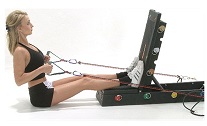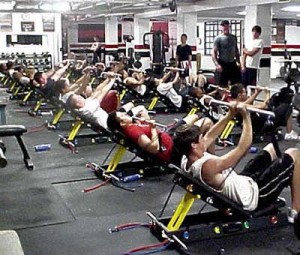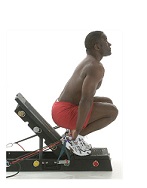 Keeping fat weight off and muscle weight on as you age is a topic that’s been discussed before, but the subject is getting renewed attention. It could be because more people are struggling with their New Year’s resolutions or maybe it’s that some experts are finding new ways to age with satisfaction rather than settling for “aging gracefully”. Whatever the reason, if you’re over 40 and are finding that your go-to plans for shaping up and dropping a few pounds aren’t working anymore, it’s time to make a change.
Keeping fat weight off and muscle weight on as you age is a topic that’s been discussed before, but the subject is getting renewed attention. It could be because more people are struggling with their New Year’s resolutions or maybe it’s that some experts are finding new ways to age with satisfaction rather than settling for “aging gracefully”. Whatever the reason, if you’re over 40 and are finding that your go-to plans for shaping up and dropping a few pounds aren’t working anymore, it’s time to make a change.
Old Strategy Getting New Attention

Compound exercises such as rows are more efficient and more effective than isolation exercises, especially for those over 40.
Compound exercises have been around for as long as people have been working out, so there’s nothing new about recommending them. The element that makes them fresh news is that they’re ultra-effective for helping people over 40 lose weight and get in shape. As Bodybuilding.com explains, compound exercises are ones that employ multiple joints to execute. Using more than one joint naturally recruits more muscle groups, so you’ll expend more energy to work more muscles, and get better results than with isolation exercises. In simple terms, you’ll get more bang for your buck from chin ups or hammer rows than from biceps curls.
Cut the Cardio?
Some experts cite a National Strength and Conditioning Association study to back up claims that excess cardio exercise depletes testosterone levels and, therefore, works against older adults of both genders, decreasing their energy levels and making it hard to lose fat weight and build muscle. The keyword there is excess–traditionally people are prone to attending an hour-long aerobics class or setting the timer on the treadmill or elliptical and going full-bore for 45 to 60 minutes. For someone over 40, that much cardio in one shot is excessive. When it comes to an aerobic workout, as you age, less is more, but you still need between 75 and 150 minutes of cardio each week. There’s a fine line between getting enough cardio and under-doing it.
 Breaking that total number up into 10 to 20-minute increments each day is the easiest way to get your cardio exercise. That’s why physicians and personal trainers alike are nuts about HIIT workouts. Getting your cardio from High Intensity Interval Training three or more times a week is more effective than traditional cardio exercises plus, Dr. Mercola points out that HIIT workouts encourage your body to produce more human growth hormone–an element that decreases significantly after the age of 30. With more HGH and testosterone in the system, men and women alike will feel better, have more energy, be able to build muscle and burn fat easier.
Breaking that total number up into 10 to 20-minute increments each day is the easiest way to get your cardio exercise. That’s why physicians and personal trainers alike are nuts about HIIT workouts. Getting your cardio from High Intensity Interval Training three or more times a week is more effective than traditional cardio exercises plus, Dr. Mercola points out that HIIT workouts encourage your body to produce more human growth hormone–an element that decreases significantly after the age of 30. With more HGH and testosterone in the system, men and women alike will feel better, have more energy, be able to build muscle and burn fat easier.
Putting it All Together

You’ll be surprised at the results you get when you perform a HIIT workout using compound exercises with bands.
So that’s the plan for people over 40: using compound exercises in High Interval Intensity Training workouts to keep your body lean and fit. The only drawback is that heavy free weights can be brutal on mature joints. That’s why professionals recommend using bands such as the ones on the TargitFit Trainer for resistance instead of iron, even before you hit the 40-year mark.
Putting it all together, the three steps for adjusting your workout after 40 are
- doing the compound exercises you already do, or adding more to your routine
- performing them with resistance bands instead of free weights
- executing the workout in a HIIT format
If you’re having a hard time coming up with your own exercises, we’ll post some below. First, though, here’s how to use them in a HIIT workout for various fitness levels:
- Beginners–do an exercise for 30 seconds, rest for 15 seconds, then move on to the next exercise for 30 seconds. Rest for 15 seconds and continue on through the exercises in the same manner.
- Experienced Exercisers–exercise for 45 seconds, rest for 15 seconds, working through each exercise.
- Advanced–exercise for 60 seconds, rest for 15 seconds, working through each exercise.
All levels can take a 90-second rest after working through the exercises once, but then start at the beginning again and go through the circuit one to two more times.
Compound exercises for an effective full-body HIIT workout can include bench press, rows, squats, hack squats or leg press, lat pull downs, deadlift, and a military press. Alternatively, you can write your own workouts, grouping upper-body compound exercises together for one day and lower-body ones for another day for more variety.
